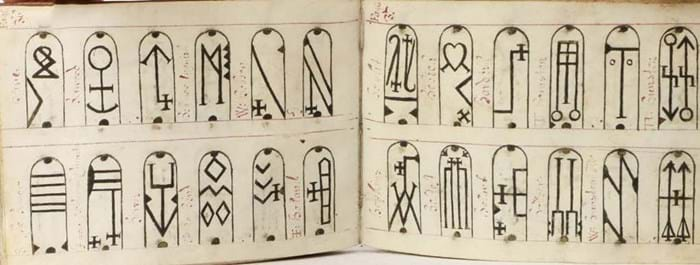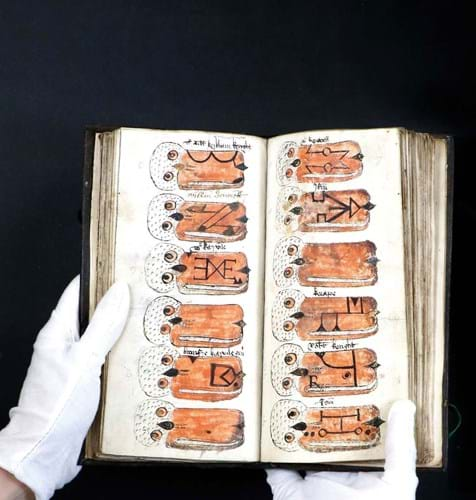The rare book came for sale in Stansted Mountfitchet from the estate of Wisbech dealer Peter Croft. Books, registers and rolls featuring ‘swan marks’ provide a link to the ancient English tradition of the keeping and marking of mute swans.
As a favourite delicacy for the banqueting table, the swan has been deemed a royal bird from the Middle Ages. Swans flying free on open and common waters were regarded as crown property and only the monarch could grant the privilege of owning a ‘game’ of swans to individuals or institutions.
All such birds had to be marked (cut or branded) to the beak and pinioned to assist in any dispute over ownership and during the annual marking of new cygnets known as swan upping. A Swan-Master was appointed to care for the royal swans and to regulate swan-keeping throughout England, assisted by deputies with responsibility for a specific region.
The manuscript, probably once owned by a deputy working in Suffolk and Norfolk, references the ‘Hundred of Wisbech’ and the ‘Isle of Ely’.
The first volume dated 1566 contains over 600 marks, followed by 19 pages of manuscript notes concerning the ‘Laws and Ordinances regarding swan’ ownership.
The names start with the Dukes of Norfolk and Suffolk, the Bishop of Ely and the Dean of York and finish with wealthy landowners.
The second volume is dated 1834 and includes notes on swan marks followed by 84 pages of swan marks and an index of owners.
Several similar manuscripts are known although - as they have long been objects of curiosity - most form part of institutional collections. The antiquarian Horace Walpole owned two similar volumes that were sold at the 1842 sale of the contents of Strawberry Hill for £8.8s 0d. They are now in the Lewis Walpole Library in Farmington, Connecticut.

Another view of the manuscript used to determine swan ownership in East Anglia – £54,000 at Sworders.
The last time a similar item appeared for sale was when a parchment swan roll from c.1500 sold at Christie’s in 1999 for £28,000.
The rare survivor at Sworders came for sale on August 23 from the estate of Peter Croft who ran an antiques shop in Wisbech for 51 years. Estimated at £8000-16,000, it attracted multiple bidders before selling to a private buyer underbid by a London-based book dealer. Croft’s own story was extraordinary. In 1945, when he was 20, he took pilot training in Texas.
Unfortunately, the engine of his Corsair F4U burst into flames, leaving him seriously injured. After both his legs were amputated he spent three and a half years in hospital.
Under the guidance of the Stamford dealer Major Bernard Edinburgh, he became an antiques dealer and by 1958 he had been elected a member of the British Antique Dealers Association.
















